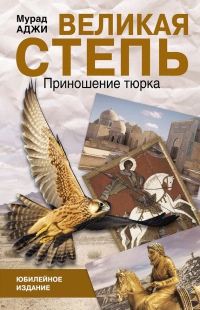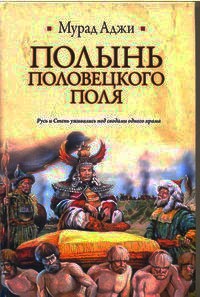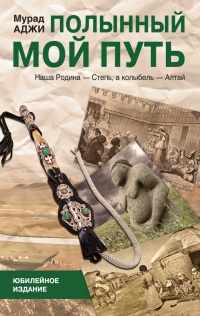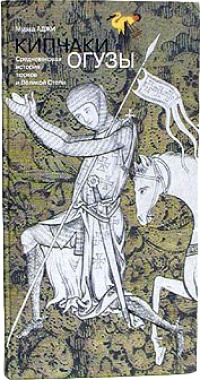Ознакомительная версия. Доступно 18 страниц из 86
Murad ADZHI
THE KIPCHAKS, THE OGUZ A Medieval History of the Turkic People and the Great Steppe
Ex oriente lux —
«Light comes from the East»….
and transforms the world
Introduction
In the life of every nation, as in the life of every person, certain events take place. There are many of these events. More to the point, life is an endless series of these events. However, while some are quite ordinary and pass unnoticed, others are very different – with the force of a hurricane, they sweep away everything that surrounds them. The destruction of the old has always transformed itself into the birth of the new. This is how eras in the history of mankind have always begun and ended: with events that shake the world.
The Great Migration of the Peoples that took place from the 2nd to the 5th centuries was one such event. Like a tornado, it swept away all that lay before it and transformed life on the Eurasian continent beyond all recognition. After it had gone, the Ancient World – the Greece and Rome of antiquity – entered the period of the Dark Ages (also called Late Antiquity, or the Early Middle Ages).
The Great Migration began in the Ancient Altai. At first, it was rather quiet and ordinary; soon, however, all of the vast Eurasian continent came to feel it. It was then that Turkic horsemen drove their mounts to the far reaches of the known world: starting from Central Asia, they reached the shores of the Pacific, Indian and Atlantic Oceans. Thousands of kilometres of the territory they had traversed now lay behind. The horsemen settled huge stretches of land that had barely been populated earlier. There was no force on earth capable of holding back and stopping this living tide that came pouring out of the Altai. All the armies everywhere gave way in encounter battle.
And in one of history’s great events the Ancient World was trampled under the hooves of the horsemen.
They destroyed all that was old in order to give people a new life.
The Great Migration of the Peoples was that most rare of events: in the history of mankind, such a thing has happened only once. The world has never known anything like it either before or since. The victories of Alexander the Great, the Roman emperors and even the famous Genghis Khan pale before it. They simply appear too ordinary.
Of course, the Great Migration did not begin all in one place, all by itself or all at once. The Turkic people had been gathering strength for seven centuries. For seven hundred years they had been laboriously preparing themselves for it, creating a culture which, following on the heels of Classical culture, would ennoble the world of people.
This was no accident; it could not possibly have been. People adopted the Dark Ages culture (and, later, that of the Middle Ages as well) without a struggle. Why? What was different about it? What was in it that so attracted people?
First of all, there was the belief in the God of Heaven – in Tengri, who watched over the Turkis. This faith of a Single God was something completely new in the life of humanity. The peoples of the Ancient World, like those of the world before it, were ignorant of it. They were pagans. Paganism and a belief in many gods distinguished this era.
The people of Ancient Greece, for example, prayed to Zeus and Hera; in the Roman Empire, they worshipped Mercury, Jupiter and other gods. They would bow their heads, offer sacrifices and beg for protection before their images. Save for the Turkis, the God of Heaven was unknown to the world; they did not pray to Him.
The God of the Altai was called Tengri, the Eternal Blue Sky. Under his eternally watchful eye the horsemen rode out into the world. They rode out boldly and confidently. It was for this reason that before each attack, before each new battle the horsemen would loudly chant «Allah billah! Allah billah!» – Turkic for «With God», or «God is with us!». They were always victorious.
Other peoples immediately noticed this.
At that time, they believed that victory in battle was due not to the warriors, but to their Patron God, and to Him alone. In accepting the new faith, people were also begging to come under the protection of a powerful god: this was the role of the faith in the lives of the nations. It is because of this that ethnographers reserve a special place in their research for religion.
….The second distinguishing feature of Turkic civilisation was iron – the metal that the Great Tengri gave to his people.
Iron allowed the Altaians to create a huge number of useful objects for the home, work and waging war. No one in the world cast iron as artfully or used it for so many different purposes. Thousands of smithy forges worked day and night to turn out this precious metal; iron was then valued more highly than gold. This, too, drew other peoples to the Turkis.
In the Altai there was a holiday of iron; it first appeared five hundred years before the beginning of the Christian Era, when they had just learned to smelt the precious metal in their smithy furnaces. The Great Khan himself opened the first holiday. He approached the anvil and struck the red-hot metal with a hammer. Each blow awoke a certain pride within the people, recalling the greatness of the ancestors who had given their descendants the gifts of freedom and strength. Only then would the festivities begin: horse-racing, dancing, singing, feasting and revelry.
It was a holiday celebrated by all the Turkic people.
It is clear that the Great Migration was not just people moving to a new location; nor was it merely the conquest of neighbouring lands. It was something else entirely. It resulted in the irrevocable destruction of mankind’s Bronze Age and opened the way to the Age of Iron.
The Turkis consciously broke with a past that had outlived its usefulness and embraced a new, progressive future. This happened across the continent.
People talk about this period in different ways, some calling it the Barbarian Invasions, or the Invasion of the Huns. This is not true. It is not true for the simple reason that the belief in the God of Heaven and iron first appeared among many peoples at this point in history – immediately after their initial contact with the Turkis, during the Dark Ages.
The horsemen – the emissaries of the God of Heaven – were deified.
Even in appearance the Turkic people differed from others. They had their own unique features, quite unlike those of any other nation on the planet. The horse that would become the symbol, or tamga (tribal emblem), of the newcomers from the Altai as well as the banners bearing the Cross of Tengri were among those features that distinguished the Turkis from other peoples.
The Ancient World had never seen anything like it. Even their clothing was unlike anything it had seen before, since it was the clothing of a horseman – a missionary and warrior who never spent a moment away from his horse.
Ознакомительная версия. Доступно 18 страниц из 86
























